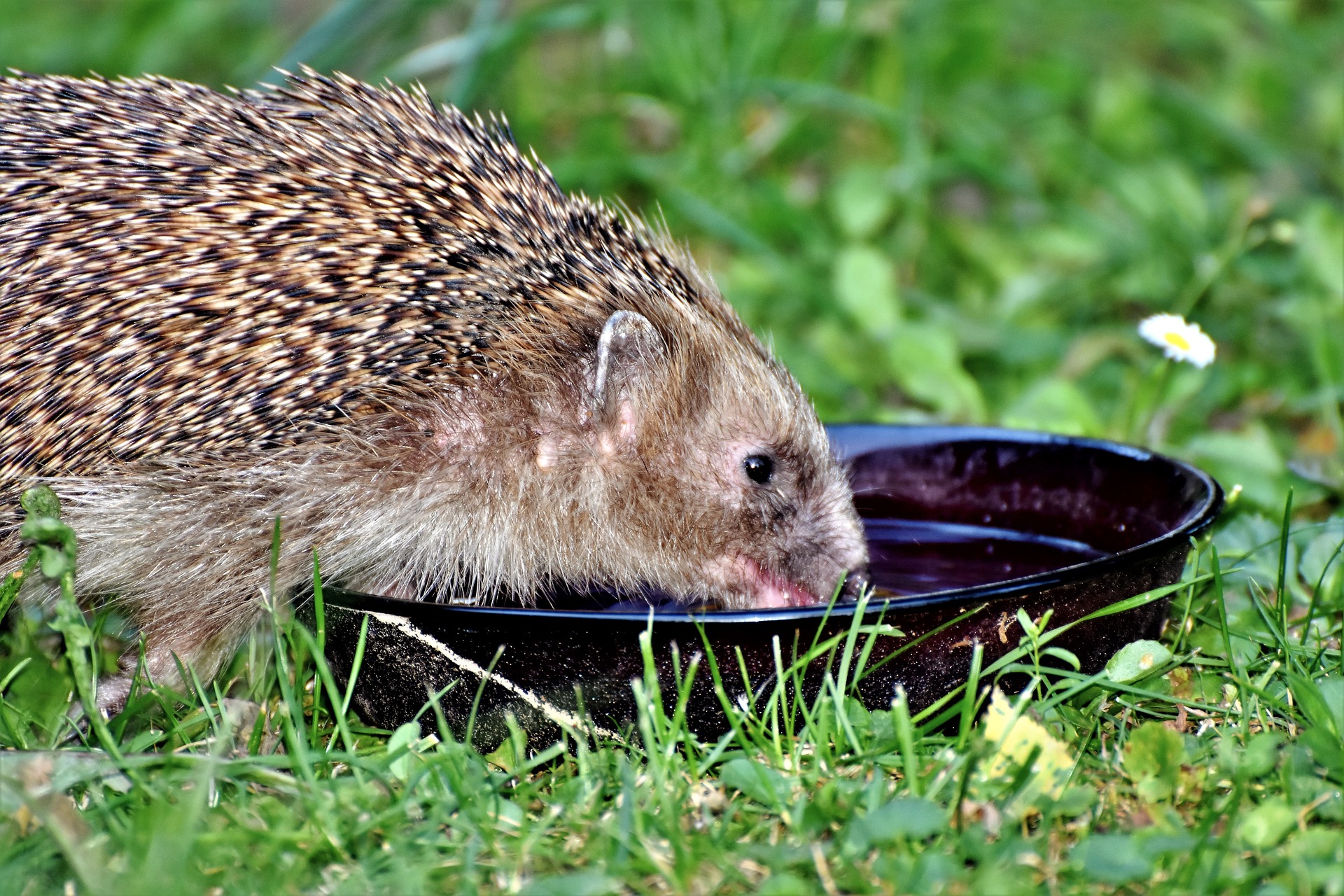

The nonstop heat of the summer months are tough for wildlife. Unlike humans, wild animals can’t simply flip a switch and bask in air conditioned bliss. We’re not saying you should welcome your area’s natural inhabitants indoors during the warmest parts of the year, but there are still ways you can help them stay cool. All they need is some water, shade, and an occasional helping hand.
Provide access to fresh water
The most persistent threat to wildlife during hot weather is dehydration. Like humans, most of the animals you’re likely to find in your yard or neighborhood need constant access to water in order to survive. You can help by making natural water sources easier to reach, or by providing your own.
If you happen to have a natural source of fresh water on your property, like a pond or stream, do your part to help wildlife access it by clearing debris away from the banks. You can do the same thing on land you don’t own, too, as long as you have permission to clean up there. Target plant matter such as dead branches and thorny foliage, as well as human litter like plastic bottles and food wrappers. This simple step will help all varieties of local fauna access much-needed water, whether they’re tiny chipmunks or huge deer.
[Related: How to stay safe around moose]
If there’s no natural fresh water to be found, you can play a vital role in wild animals’ well-being by putting water out for them to drink and bathe in. Here are some tips for hydrating a few common backyard critters to get you started.
Birds
Purchase a simple bird bath for your feathered friends—or build one yourself out of inexpensive salvaged materials. Adding a feature that keeps the water moving, like a drip jug, mister, or a fountain, will make your bird bath more appealing to your avian neighbors. The sparkle of moving water will attract their attention from the air, and the circulation can help prevent algae and insect eggs from gumming up the basin.
Small mammals
Place small dishes or basins of water outside to help hydrate chipmunks, squirrels, and rabbits. Don’t be surprised if the water levels in these vessels go down overnight—nocturnal animals like possums, raccoons, skunks, and badgers get thirsty too! Be sure to refill or change the water often to avoid creating a stagnant breeding ground for mosquitoes and other insects. It’s also a good idea to place a sturdy stick or a small plank of wood into your larger dishes so any small animals that fall in have a handy escape ramp.
Reptiles
Depending on where you live, wild reptiles may pass through your property. You can help them stay hydrated by leaving a small amount of water at ground level for them to drink or even soak in: many reptiles rehydrate best by absorbing water through their skin. Do this by pouring a thin layer of water into a shallow tray or making an indentation in the ground that a bowl of water can sit in. This will help any passing snakes, lizards, and turtles slip in with ease. This water should be room-temperature or warmer to prevent chilling these cold-blooded animals.
Large mammals
In general, big animals like deer and porcupines have the mobility to access natural sources of fresh water without human assistance. However, if your area has been experiencing logging, construction, or wildfires, even the most self-sufficient fauna may be displaced from their habitats. You can lend a helping hand by setting up a kiddie pool full of fresh water on your property as far from any roads and buildings as possible. Try to minimize contact with large wildlife by securing your trash and never approaching them or offering food—the less contact these travelers have with the human world, the better.
Offer a shady space
The other crucial factor for heat-stricken wildlife is shade. Consider leaving the bushes and shrubs in your yard large and leafy during the hottest time of the year rather than cutting them back. If you have a naturally shady area on your property, consider planting a shade garden to give wildlife a safe place to relax. A thick layer of mulch can help keep the soil in this area moist and cool. And while finding animal burrows and holes in your yard can be annoying, leave them be during hot months—they may be the only places where local wildlife can escape the elements.
Give them a helping hand
Most wild animals that live in your area are accustomed to its seasonal heat—or know how to migrate to cooler climes before it arrives. But the rapid warming of our planet is causing an increase in heat waves, wildfires, and unseasonably warm days, weeks, and even months around the world. This means that some wildlife may be caught off guard by extreme temperatures.
Seeing wildlife moving or behaving unusually is a sign that something may be wrong. Birds sitting on the ground, nocturnal animals appearing during daytime, and any mammals lying still or “sunbathing” may be experiencing heat stroke or severe dehydration. Reptiles are the exception to this rule—turtles, snakes, and lizards often warm up in direct sunlight during the day, and shouldn’t be disturbed unless they are clearly injured or in a dangerous spot like a busy road.
If you see an animal that may need help, assess the situation from a safe distance. It may be OK to leave a dish of water nearby, but don’t get too close or attempt to handle one without expert advice. Contact your area’s wildlife rehabilitation center and describe the animal’s symptoms for tips on what to do next. If you don’t have one nearby, try your local animal control department. With a little vigilance, you can help wildlife stay safe and healthy during the hottest time of the year.
